BLOG ARTICLE
How To Get Reciprocal Links - Everything you need to know
Last updated: 4/13/2025
Last updated: 4/13/2025
Link building remains a crucial component of any successful SEO strategy, and reciprocal linking is one of the more direct ways to strengthen your website’s backlink profile.
Reciprocal links involve two websites agreeing to link to each other, creating mutual value by sharing traffic, authority, and relevance.
While the idea might seem simple, executing it effectively requires strategy, tools, and relationship-building.
When done correctly, link exchanges can be one of the best link-building strategies for small businesses. Traditional methods like buying backlinks or guest posts can quickly strain budgets, and relying on people to organically link to your content is often unrealistic.
In this guide, we’ll explore modern, actionable approaches on how to get reciprocal links, tools to make the process easier, and real-world methods that work in 2024.
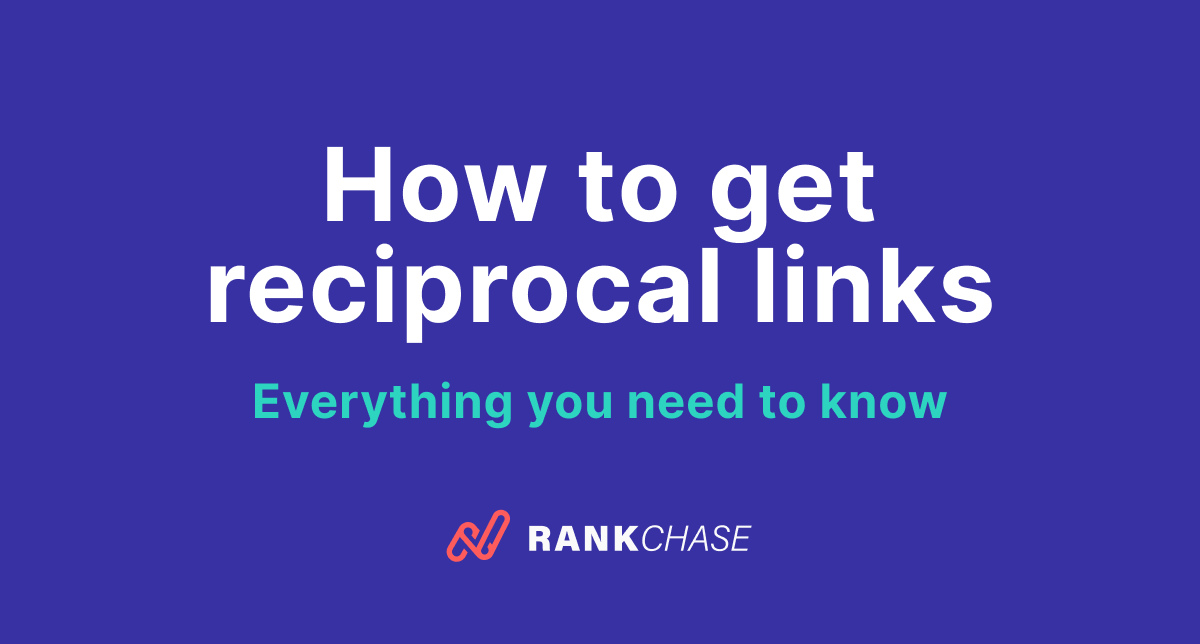
Why Reciprocal Links Still Matter in SEO
Reciprocal linking often gets a bad rap, mostly due to abuse by spammy websites in the past. However, when done correctly, it’s a legitimate and ethical way to:
- Build connections within your niche.
- Enhance domain authority (DA) and domain rating (DR).
- Improve search engine rankings.
- Drive targeted referral traffic to your site.
The goal is to prioritize quality over quantity. Google penalizes manipulative link schemes, so focus on genuine, niche-relevant collaborations with websites that provide value to your audience.
What to look for on a reciprocal link partner? - The link building checklist
Before diving into the best strategies for streamlining your process of acquiring reciprocal links, it’s important to understand that not all reciprocal links are beneficial. In fact, some backlinks can harm your SEO if you’re not careful about selecting the right websites to partner with.
Choosing the right websites involves analyzing key factors like niche, traffic, Domain Rating (DR), and the quality of their content.
Here's a few factors to take into consideration:
Relevance to Your Niche
The first and most crucial factor is niche relevance. Links from websites that align with your industry or content topic carry far more weight in terms of SEO than random, unrelated sites.
How to Check Niche Relevance:
- Content Alignment: Review the website’s blog or main content pages. Are their topics closely related to yours? For example, if you run a Marketing website, a link from an SEO blog makes sense, while a link from a fashion site may not.
- Keywords: We use Spyfu (It provides a wealth of insights about other websites, including your competitors, allowing you to discover backlink and keyword opportunities) to see what keywords the site is ranking for. If their top-ranking keywords are similar to yours, it’s a good sign they’re a relevant partner. Pro Tip: Look for websites targeting audiences similar to yours. Even if their content isn’t an exact match, having overlapping audiences can make the collaboration mutually beneficial.
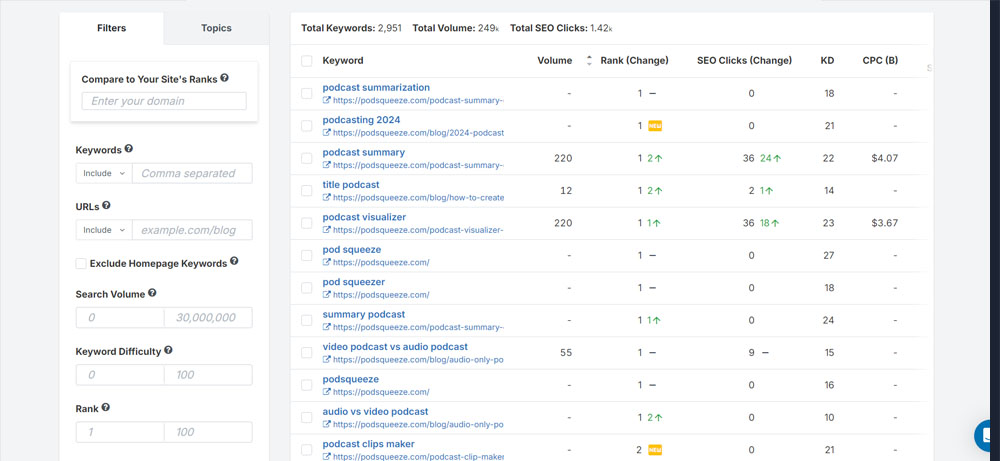
Assessing Website Authority
Domain Rating (DR) and Domain Authority (DA) are metrics that indicate how well a website is likely to perform in search engine rankings. Higher DR or DA scores suggest a more authoritative website, which makes their backlinks more valuable.
Note: DR (Domain Rating) and DA (Domain Authority) measure similar aspects of a website's strength, but DR is the metric used by Ahrefs, while DA is from Semrush. Both are well-respected SEO platforms with their own algorithms for evaluating domain relevance.
How to Analyze DR:
- Ahrefs: Enter the website URL to check its DR score. Generally, a DR of 10 indicates a website is still getting established, 20+ suggests some recognition, 40+ reflects industry reputation, and 60+ typically belongs to major players. However, it’s important to note that DR is primarily a comparison metric. The goal should be to have a higher DR than your competitors, rather than chasing the highest DR possible. Learn more about DR here. Comparison: Aim for link partners with DR scores that are similar to or slightly higher than your own. Collaborating with sites with much lower DR may not bring significant SEO benefits. Pro Tip: Avoid websites with an unusually high DR but low traffic. This could indicate a spammy or manipulated profile rather than genuine authority.
Traffic
DR is a helpful indicator, but combining it with traffic data provides a clearer picture of whether the website is actively visited and has an engaged audience.
How to Check Traffic:
- Traffic Volume: Use tools like Sypfu or Ahrefs to estimate monthly traffic. Look for websites with steady or growing traffic trends.
- Audience Match: Check if the audience demographics align with yours. For instance, a tech blog may not benefit much from a link exchange with a parenting blog. Pro Tip: Avoid sites with erratic traffic patterns or sudden drops, as these could indicate penalties or issues with their SEO.
Backlink Profile and Spam Indicators
Check the backlink profile of potential partners to ensure they’re not associated with spammy or low-quality websites.
How to Evaluate Backlink Profiles:
-
Anchor Texts: Use Ahrefs previously mentioned DR checker to see the anchor texts (the text associated with a link) used in their backlinks. Too many exact-match anchors, or random anchors not related to the website's niche, could signal manipulative practices.
-
Backlinks ratio: With Ahrefs' free tool, you can also check the ratio between backlinks and referring domains, which can help you assess the website’s link profile. For example, a news website like The New York Times may naturally have significantly more backlinks than referring domains since many sites link to their content multiple times. However, if a service-based website has an unusually high ratio, it could be a red flag indicating manipulative link-building practices.

-
Link Diversity: Look for a natural mix of backlinks, including dofollow and nofollow links, from various sources.
Pro Tip: Be cautious of sites with many outbound links but little incoming traffic, as these could be link farms.
Remember, rather than focusing on a single metric, it's important to evaluate multiple factors when considering a potential reciprocal link partner. Some websites may be legitimate despite having one or two metrics that are slightly off. If a website has relevant backlinks, niche-specific and well-written content, consistent traffic, and a professional overall design, these are all strong green flags that can outweigh a few less favorable indicators.
Step-by-Step Strategies for Reciprocal Link Building
Getting reciprocal links is really all about efficient outreach. This means finding the right websites that fit your niche and domain authority, then presenting a clear and appealing offer for collaboration. The goal is to make the exchange worthwhile for both parties.
The challenge, however, is that success rates can be low, and most of your messages will likely be ignored. If you’re a small business or solopreneur, it’s crucial to use techniques and tools that make this process as efficient as possible while also scalable—without draining your time or budget.
Below, we’ll cover a few techniques and tools to help streamline your outreach process and connect with high-quality, niche-relevant partners for link and content exchanges.
Manual Outreach: Starting with the Basics
The most straightforward way to start building reciprocal links is by manually searching for potential partners. This involves looking for websites in your niche through Google, industry directories, or by exploring competitors’ backlink profiles. Tools like this niche site finder can be a huge help here, allowing you to filter sites by niche and Domain Rating (DR) to find the most relevant candidates.
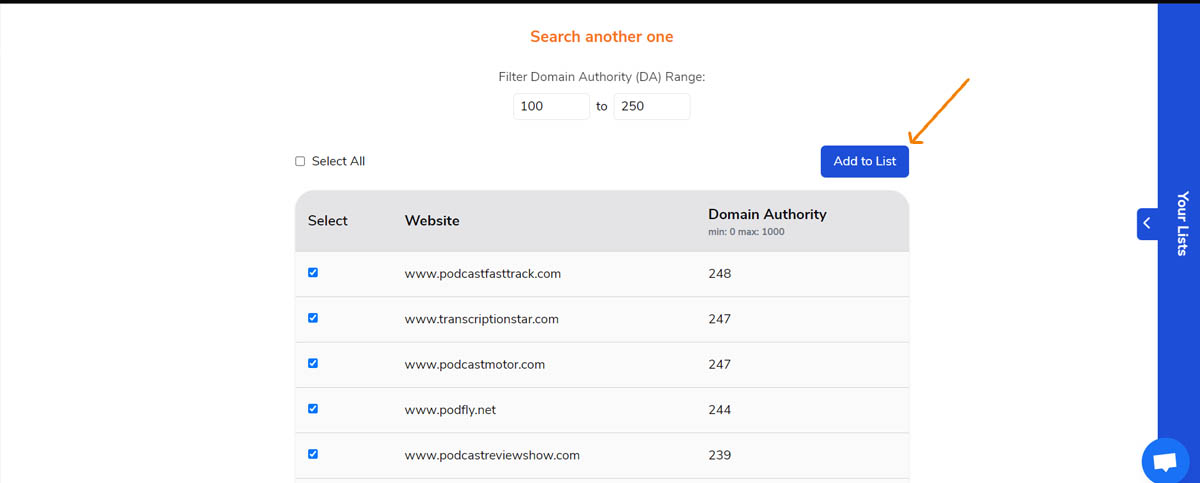
While this method is cost-effective, it can be time-consuming and requires significant effort to see results. Based on our experience, the success rate for manual outreach hovers around 3%, meaning you need to contact a lot of websites to secure just a handful of collaborations.
Steps to Execute Manual Outreach:
- Use the niche site finder or search on linkedin to find websites in your niche with similar or slightly higher DR (if you search on linkedin or directories you need to check the websites' DR manually).
- Visit each website manually to find contact information, typically on their “Contact Us” page.
- Send personalized outreach emails, emphasizing the mutual benefit of a link exchange.
While this method works, its inefficiency can be a roadblock, especially for small businesses or solopreneurs with limited time.
Automating Outreach with Apollo.io
To save time and scale your efforts, you can combine the niche site finder with a platform like Apollo.io. Apollo is a lead-generation and email outreach tool that can help you automate the process of finding and contacting website owners.
How This Method Works:
- Find Prospects: Use the niche site finder to identify relevant websites by niche and DR, then export a list of potential partners.
- Gather Contact Info: Import the list into Apollo.io, which will help you find verified email addresses for the website owners or decision-makers.
- Set Up Campaigns: Create automated email sequences tailored to your audience. Apollo allows you to send follow-up emails automatically, increasing the likelihood of a response.
Why This Method Works:
- Automating the contact process saves time and ensures your outreach remains consistent.
- By using Apollo.io, you can reach a larger number of potential partners without spending hours tracking down contact details manually.
- You can personalize your outreach better since you can fetch people's names and roles.
Streamlined Outreach with Tools Like LinkDr, Respona and RankChase
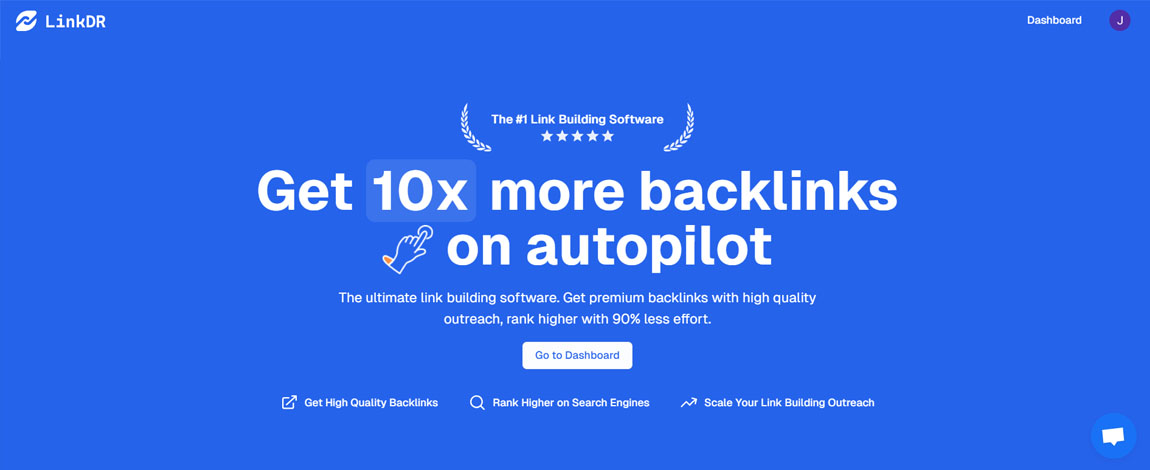
If you’re looking to simplify the entire outreach process further, platforms like LinkDr and Respona offer an all-in-one solution. These link building tools combine prospecting, email outreach, and follow-up management in one platform.
How It Works:
- Enter your website details into the platform. The tools will analyze your site and suggest potential link partners based on niche relevance and DR. For example, these could be articles that mention your website but don’t include a link, or listicles in your niche where your website would be a great addition.
- Use the built-in contact database to access email addresses and other contact details.
- Leverage pre-built templates and automation features to create personalized outreach campaigns with minimal effort.
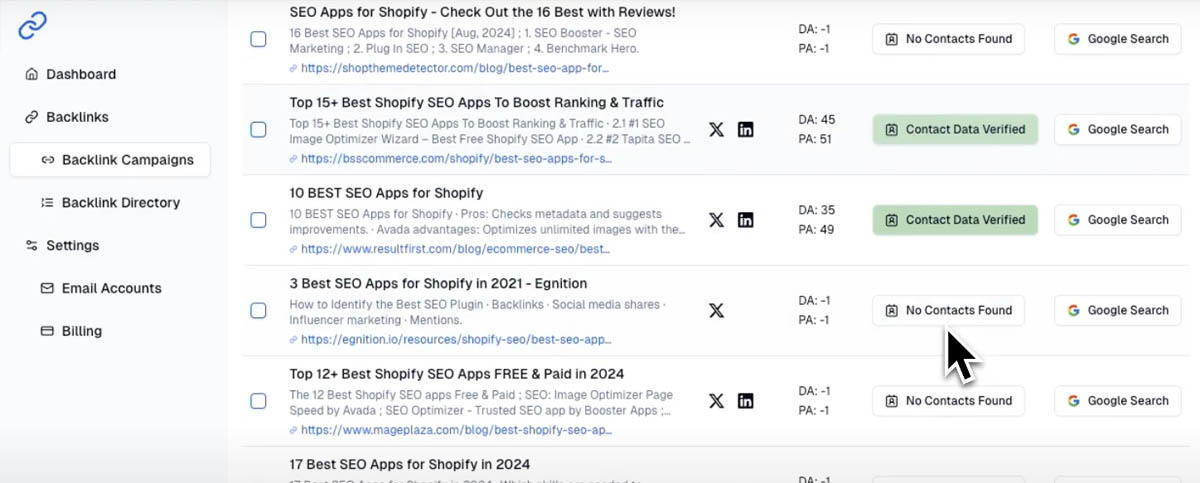
Advantages:
- Efficiency: These platforms drastically reduce the manual work involved in finding and contacting potential partners.
- Higher Success Rates: Tools like Respona also provide features like AI-driven personalization, which can improve your email open and response rates.
- Integrated Workflow: Everything from prospecting to follow-ups is managed within a single tool, making it ideal for businesses with a budget for advanced solutions.
Challenges: The downside is cost (150$/mo) —platforms like LinkDr and Respona are more expensive than manual methods or using Apollo.io. However, the time and effort saved often make them a worthwhile investment for those with the budget to spare.
Using RankChase to automatically find relevant partners for link and content exchanges

RankChase is a highly effective and budget-friendly alternative to other outreach tools, designed to automatically connect you with niche-relevant websites seeking link and content exchanges.
Here’s how it works:
- Submit Your Domain: Simply enter your website details.
- Analyze Niche, DR, and Spam Score: RankChase evaluates your site’s niche, Domain Rating (DR), and Spam Score to ensure compatibility.
- Match with Relevant Websites: It then connects you with other legitimate and relevant websites in your industry that are open to collaborating on link building, content exchanges, and cross-promotion.
RankChase emphasizes quality over quantity, ensuring all matched websites are credible and aligned with your audience.
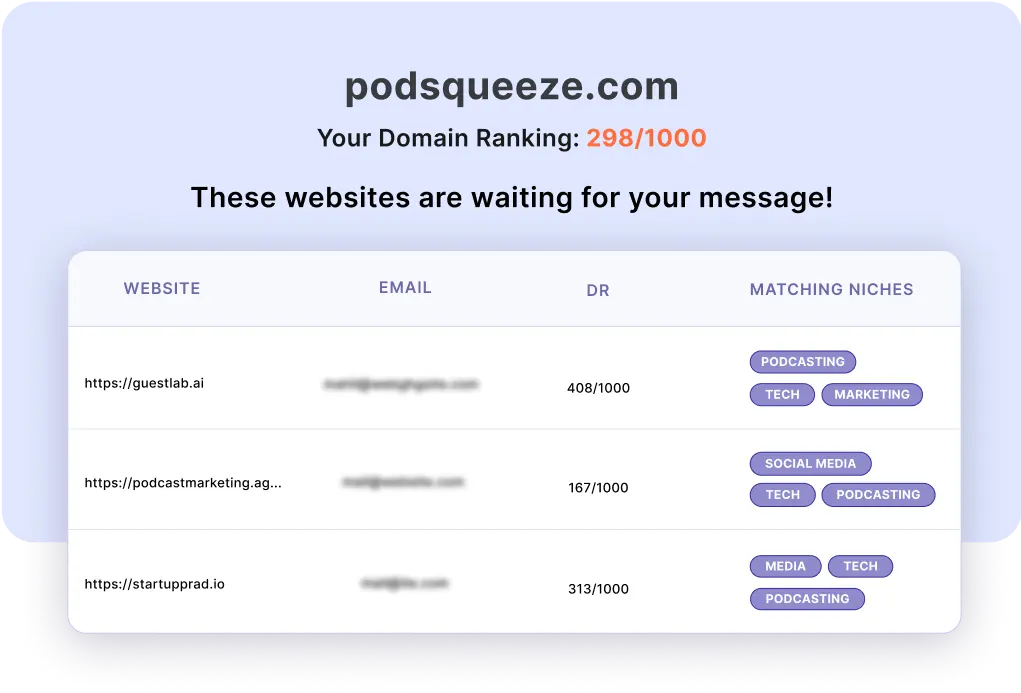
The best part is that you don’t have to actively search for potential partners. RankChase continuously scans its ever-updating database for new matches and notifies you via email whenever a suitable partner is found, complete with their contact details to make your link and content exchange effortless.
2. Listicles: Add Value First
One of the most effective ways we've discovered to encourage reciprocal linking is by offering value upfront, and creating listicles or "best of" articles has proven to be a game-changer for us.
How to Create Listicles for Reciprocal Links
This approach is both simple and highly effective when executed thoughtfully. Here’s how we do it:
- Step 1: Choose a Topic That Resonates with Your Niche: Start by picking a topic relevant to your industry or audience. For example, something like “Top 10 Tools for Small Business SEO” or “Best Resources for Content Marketing.” The more targeted the topic, the better your chances of attracting interest from potential link partners.
- Step 2: Feature Relevant Tools, Websites, or Brands: Select tools, resources, or websites from companies that align with your niche and could be potential link partners. The key here is to write genuinely valuable content that highlights why these companies are worth including. At this stage, we don’t add backlinks—just the mentions.
- Step 3: Reach Out to the Featured Brands: After publishing the article, we contact each brand included in the list. The message is straightforward: we let them know they’ve been featured and share how their inclusion adds value to the list. Then, we offer to include a backlink to their website if they’re open to reciprocating with a backlink to our site.
Why this strategy works
This strategy transformed our outreach results. Initially, when we relied on generic cold emails for link exchanges, we saw only about a 3% success rate. For every 100 emails we sent, only about three responded positively. It was discouraging and incredibly time-consuming.
Switching to this value-first method completely changed the game for us. Creating listicles, we offered something beneficial to potential link partners: visibility and validation. This approach boosted our success rate to 12%. For every 10 companies we contacted, at least one would agree to a backlink exchange.
Not only that, but we also had the opportunity to build valuable connections with industry peers—some even shared our listicles on their social media!
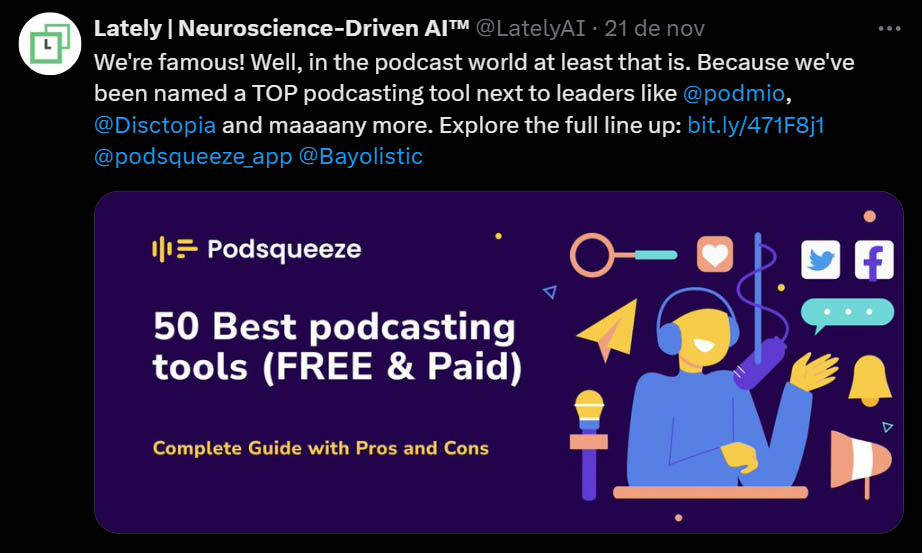
Crafting Effective Outreach Emails
Regardless of which method you choose, a big part of a successful outreach lies in your messaging.
We get a lot of emails asking for link exchanges that look like this:
Subject: Let’s Collaborate – Loved Your Content on [Topic]
Hi [First Name],
I hope this email finds you well! I recently came across your article, “[Article Name or Topic]” on [Their Website], and I just had to reach out. It’s such a well-written piece and really resonated with me, especially [specific detail you enjoyed or found useful].
Since our websites share a similar audience, I was wondering if you’d be open to a link exchange. It could be a great way to benefit both our readers and boost visibility.
Let me know if you’re interested!
Best regards, [Your Name]
However, we recognize this is a typical email template, and the sender most likely didn’t read our content or genuinely enjoy it. Because of this, we tend to be biased toward disregarding emails that feel insincere.
Instead, we recommend reaching out to your prospects in a more authentic and natural way. Use a shorter email that clearly and concisely communicates mutual value.
A strong outreach email should:
- Be Clear and Direct: State your intent upfront—mention your website, the potential for collaboration, and how the exchange benefits both parties.
- Show Value: Emphasize the mutual benefit of the partnership, whether it’s increased traffic, exposure, or improved authority.
- Stay Personal: Use the recipient’s name, reference why you reached out to them ex: sharing a common audience
- Finish with a question: Finishing with a question is a great way to include a subtle call to action.
Here’s a Simple Example:
Subject: Collaboration idea
Hi [First name],
I’m [Your Name], the founder of [Your Website].
I noticed that our websites share a similar audience, so I wanted to reach out about a potential collaboration.
Perhaps we could explore opportunities to highlight each other’s valuable content through link exchanges or other cross-promotion ideas. I believe this could bring real value to both our audiences and help us expand our reach.
Does this sound like something you'd be interested in?
Best regards, [Your Name]
3. Networking at Events
Sometimes, the best connections happen offline. Industry conferences, meetups, and webinars are excellent places to meet website owners and marketers who might be open to collaboration.

Practical Networking Tips
- Be Prepared: Know your niche, your website's metrics (like DR), and your collaboration goals.
- Follow Up: After meeting someone, send them a personalized email to propose a link exchange.
If attending events isn’t an option, online communities like LinkedIn, Facebook or Whatsapp groups can also be valuable networking spaces.
4. Partnering with SEO and Link Building Agencies (cool trick)
SEO agencies often have a steady need for link-building partners. If your website has established authority, you can pitch yourself as a partner for their clients’ campaigns.
How It Works
- Offer your site as a platform for placing backlinks for their clients.
- In return, request ABC exchanges (where Site A links to you, and you link to Site C).
Agencies are particularly interested in well-maintained, niche-relevant sites, so ensure your website is in good shape before reaching out.
When to Avoid Reciprocal Links
While reciprocal linking can be valuable, it’s not a one-size-fits-all solution. Avoid this strategy if:
- The potential partner’s site is irrelevant to your niche.
- The website has poor metrics (low DR, spammy backlinks, etc.).
- You’re relying solely on reciprocal links without diversifying your backlink strategy.
Learn about Reciprocal linking in SEO.
Final Thoughts
Reciprocal link building remains a practical and effective strategy when approached with intention and the right tools. Leveraging outreach campaigns, creating value-driven listicles, networking, and using platforms like RankChase, is a great way to secure high-quality backlinks that enhance your SEO efforts.
Remember, the goal here is to collaborate with genuine high quality websites and maintaining a balanced link profile. With patience and persistence, you’ll find that reciprocal linking can significantly contribute to your site’s growth.